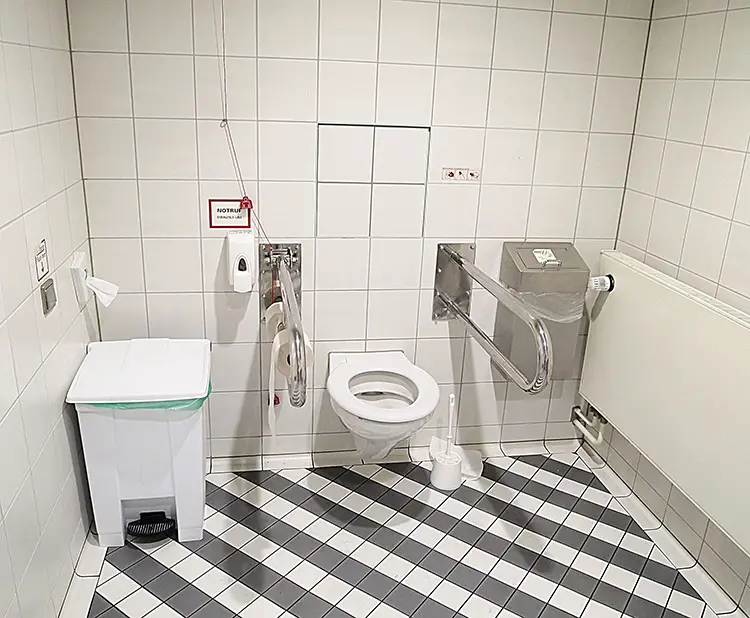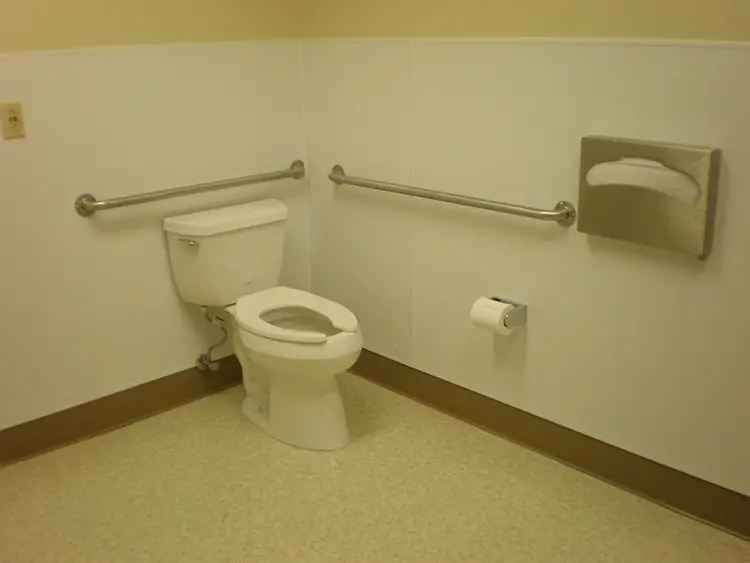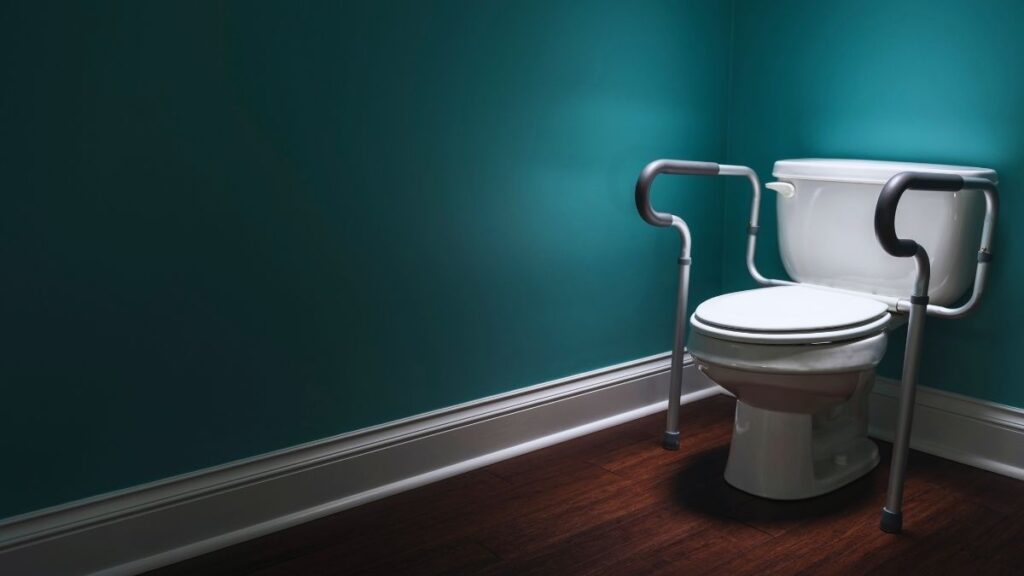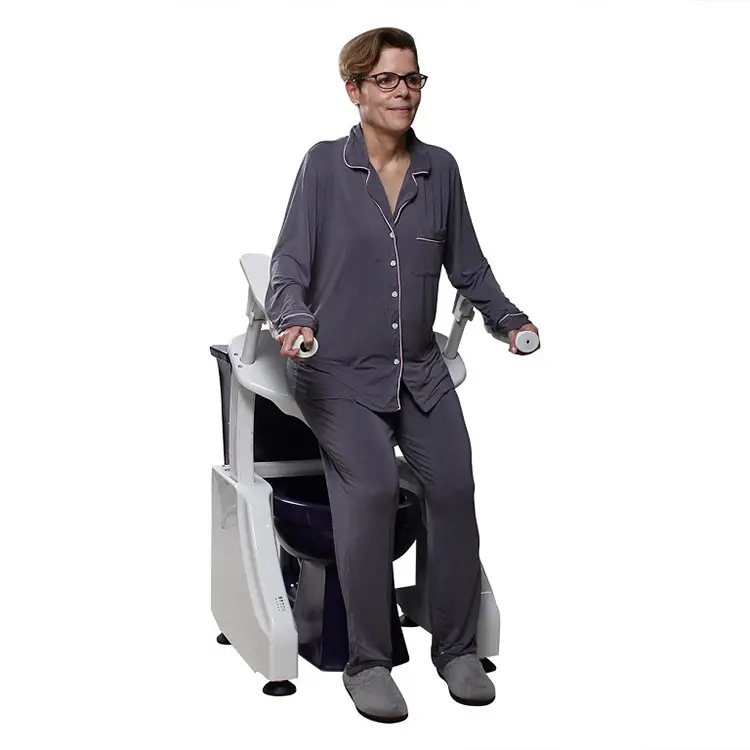One often overlooked aspect of aging is the difficulty that can come with the simple task of using the restroom. As we age, a combination of chronic pain, joint limitations, weakness, and injury can make it very hard to get on and off the toilet. This is on top of the many injuries resulting from bathroom use.
Considering this is a battle that needs to be waged several times a day, toilet support for seniors can become a necessity. Read on to discover more about what supports may be best for you or the seniors in your life.
The Need for Toilet Support
As briefly touched upon above, there is a wide range of reasons why a senior may need a toilet aid to help them with using the restroom. Consider chronic pain, for starters. Roughly 100 million Americans live with some form of chronic pain, of which knee pain is the second most common cause.
Research shows a full third of Americans will report knee pain at some time in their lives. It also appears as if these numbers are only going to increase. According to a study from 2011, knee pain is becoming more and more common in modern society. Mysteriously, the researchers determined that increasing weight is only a small part of the reason for this increase.
Other studies have noted that people are getting hip and knee replacements at even younger ages. As of 2010, approximately 10% of those in their eighth decade of life had received a total knee replacement, and at this time there had been approximately 2.5 million people with hip replacements throughout America.
As one can imagine, experiencing pain can make sitting down on or standing up from a toilet seat very difficult – especially when pain occurs in the legs.
Thankfully though, there are a few things one can do to help to relieve pain as one seeks to relieve themselves.
1. Toilet Support Bars
The first thing that a senior may want to consider is the installation of toilet support bars. These are simply bars that help one ease down onto the toilet and provide a means of support to push off as they stand back up.
How Toilet Rails Benefit Seniors
These types of rails not only keep one from “plopping” down onto the toilet seat but also help to decrease the load placed on the leg joints when one is doing so. Weight can instead be transferred to the arms, diminishing that placed upon the legs.
Toilet rails can also help prevent falls by giving one something to hang onto after they have stood up. Should orthostatic hypotension, vertigo, or some other balance-related issue prove to be a regular problem, toilet rails offer the user stability and a sense of security.
What to Consider in a Toilet Safety Rail
When looking for toilet safety rails there are two main factors to consider: the weight capacity and the height.
The weight capacity is the very first thing that needs to be examined. If you weigh 350 pounds, then it can be dangerous to use toilet safety rails that are only designed to accommodate 250 pounds. Thankfully, most toilet rails are strong, but this is still a factor to consider.
The height of the bars is the next component. If the bars are too high or too low, they will not provide as much benefit to the user as toilet rails that are of the appropriate height. The necessary height will differ based on the height of the user. This is something you can measure before purchase.
When choosing a toilet safety rail, consider the Standers Grab Bar, the Big John (boasting an 800lb tolerance), or the Essential Bath Safety toilet rail. All of these serve as great options for extra safety and support in the bathroom.
Standers Curve Grab Bar
- Prevent Falls: Ensure your safety with the Stander Curve Grab Bar. The wall-mounted grab bar offers superior stability and a comforting hand grip to support seniors while standing from bathtubs and toilets helping to maintain balance and avoid falls
- Rotating Grab Bar: Equip your bathroom with a rotating grab bar and gain full range of independence! This pivoting grab bar lays flat against the wall when not in use, perfect for maximizing space! Enjoy peace of mind as you move about safely
Big John Bariatric Commode Chair
Essential Bath Safety Toilet Rails
- Attach easily to any toilet
- Full length waterfall arms
2. Elevated Toilet Seats
You want to make sure you have the right toilet height. Elevated toilet seats are our number two recommendation. This option offers a very thick toilet seat that screws onto the toilet underneath the current seat. The elevated seat is several inches thick, allowing the user to sit down comfortably without feeling as if they have to squat all the way down into a child’s chair.
These seats are very easy to install, require no effort to use (you simply sit down), and make it so that the knees and hips don’t have to do as much work to help you keep your balance and carry your weight.
CaregiverProducts.com has an excellent version of the elevated seat. It will raise the toilet seat by three inches, significantly lessening the distance between you and your toilet.
- Fits Most Elongated Toilet Seats
- Lifts and lowers like a regular toilet seat
Often, an elevated toilet seat combined with toilet rails will create the perfect recipe for getting on and off the toilet with security and ease. However, there are circumstances when something more heavy-duty will be required. For instance, if you or the senior in your care has suffered a stroke.
If this is the case, we recommend checking out a different tool, which we will discuss below.
3. Elevating Toilets
When the more basic options aren’t enough, elevating toilets often do the trick. Much like a lifting recliner, these are simple motorized mechanisms that will help to lift and lower one from the toilet with minimal muscular effort involved.
CaregiverProducts.com offers an elevating toilet known as the Dignity Lifts Deluxe Toilet Lift. Dignity Lifts serve as a good example of what this product does. These systems are expensive. However, if there is no other way for one to use the bathroom safely or without experiencing pain, an elevating toilet may be a necessary purchase.
With the Dignity Lifts version, the entire unit nestles around the toilet where it stays secured. The user then sits against the raised toilet seat, grabs the handles, and lowers the unit until they are sitting on the toilet in a ‘normal’ position.
When the user is done, they simply hang onto the handles once more, activate the electric motor, and the toilet raises them back up to a standing position over the course of 20 seconds. This slower speed not only keeps one from being launched through the ceiling but also helps to eliminate any dizziness which may come from rapidly transitioning from a seated to a standing position.
The elevating toilet is certainly a more extreme example of a toilet aid. If this is the level of aid the user needs, then there are likely going to be times when making it to the toilet simply doesn’t happen. In this case, it is helpful to consider some of the many incontinence products available.
Incontinence and Toilet Help
4. Adult Pullups
Should incontinence become a regular occurrence, one of the first toilet aids to consider is using adult pull-ups. There are numerous types available on the market. They range from discrete, light-duty options to those designed with major absorption capabilities for all-night wear.
These often serve as the first line of defense to help prevent accidents – particularly if one is away from the toilet aids regularly used back at home.
5. Waterproof Bedding Material
If incontinence underwear is not enough or if incontinence is only an occasional problem, it may be worth considering the use of sheets specifically designed for bedwetting. These products greatly aid in the cleaning process after the fact, help to eliminate residual odors, and can extend the life of a mattress and other bedding.
6. What if I Can’t Wipe?
It’s not just knee and hip issues that can make it difficult to use the toilet. For many, the most difficult part of using the restroom is the need to reach behind them to wipe.
In 2009, 9% of the American population reported shoulder pain to some extent. If we hold that this metric is fairly stable, then a large segment of the American population may have a difficult time reaching behind them to wipe after using the restroom.
There could be any number of causes for this, including recent surgery, rotator cuff tears, arthritis, or bursitis. Any of these common causes of shoulder pain can make it difficult to engage in the activities of daily life – such as using the restroom.
If this is the case, there are several products on the market designed to help one to clean themselves efficiently with minimal pain.
Torkel Toilet Tissue Tongs
The Torkel is essentially a piece of wire that firmly holds toilet paper via spring pressure. It also allows you to clean yourself with minimal fuss. Once the piece of toilet paper has been used, you simply squeeze the tongs, releasing the pressure and dropping the toilet paper into the toilet. Then, a new piece of toilet paper is inserted.
This device is super simple to use and only costs around $15.
Bottom Buddy Toilet Aid
- Soft, flexible head with three tulip-petal sections
- Helps when lowering onto and rising from the toilet
For those with arthritic or weak hands, the Bottom Buddy may very well be a better option than the Torkel Tongs. No hand squeezing is necessary here. Instead, all one has to do is insert the toilet paper into the head attachment, use the wand, and then push the button to release the used toilet paper into the toilet.
Nothing used has to be touched. Plus, this acts as a clean and efficient means of wiping yourself without having to strain the shoulders. The cost is right around $35. It is more expensive than the Torkel, but it may prove to be a better option.
The Self Wipe Toilet Tissue Aid
- Comfortable and easy to use hygiene aid helps people who have difficulty bending or limited use of their hands and arms to function independently when using the toilet.
- Toilet tissue is placed around the angled clamp on the lower portion of the device.
This is an L-shaped device that holds the toilet paper on a rounded end while providing a firm grip on the handle side. It allows the user to wipe with little difficulty. Once the toilet paper has been used, the user simply presses the button atop the handle with their thumb and the release mechanism allows the toilet paper to drop into the toilet.
Staying Safe as You Help Somebody Use Toilet Aids
We can’t go without mentioning the caregiver who is assisting a loved one with using the toilet. Should a caregiver become injured because of poor technique, they quickly become much less efficient and can even be a danger to the person in their care.
It is extremely easy to injure your back, neck, or shoulders while helping to lift and move another person. For this reason, proper technique, or biomechanics, in caregiving is essential in order for it to be safe for both parties. Whether you are helping someone use the restroom, get in and out of bed, or stand up from a wheelchair, the same principles apply.
Toilet Rails

These can be a lifesaver. If a loved one has something to push up from, they are less likely to yank on their caregiver’s body. This in turn results in better balance, decreased risk of falls, and decreased risk of injury for both parties.
Installed Handles

These are drilled and anchored into the studs of a wall. Handles serve as a fantastic item for the user to hang onto as their caregiver is helping to get them cleaned up. The wall isn’t going to move, whereas a walker might, so this helps to ensure that there is a sturdy anchoring point nearby for the task to be completed quickly and efficiently with minimal risk.
Don’t Let Them Hang onto Your Neck!
This is vital for caregivers. Never let a loved one hang onto your neck as you provide care. The human neck is not designed to hold the entire weight of a person’s body and any attempt to do so is liable to cause severe injury.
If one is going to be a caregiver, they need to understand proper lifting biomechanics for helping somebody weak and unsteady with moving throughout different environments. Check out the following video for more tips on this.
The Final Word
Using the bathroom can be somewhat difficult as a senior, particularly when joint pain is involved. Without the proper bathroom aids it can not only be a very painful experience but an unsafe one as well. There’s no denying that the person with atrocious knee pain is more likely to fall when they get up from the toilet than the person with pain-free knees.
As a result, we must find ways to minimize pain when possible – especially when it comes to using the restroom. The above list of tips will help to do so.
What are your thoughts on the situation though? Are there other bathroom aids you’ve found useful (or not) that you can share with others? Let us know in the comments below!










